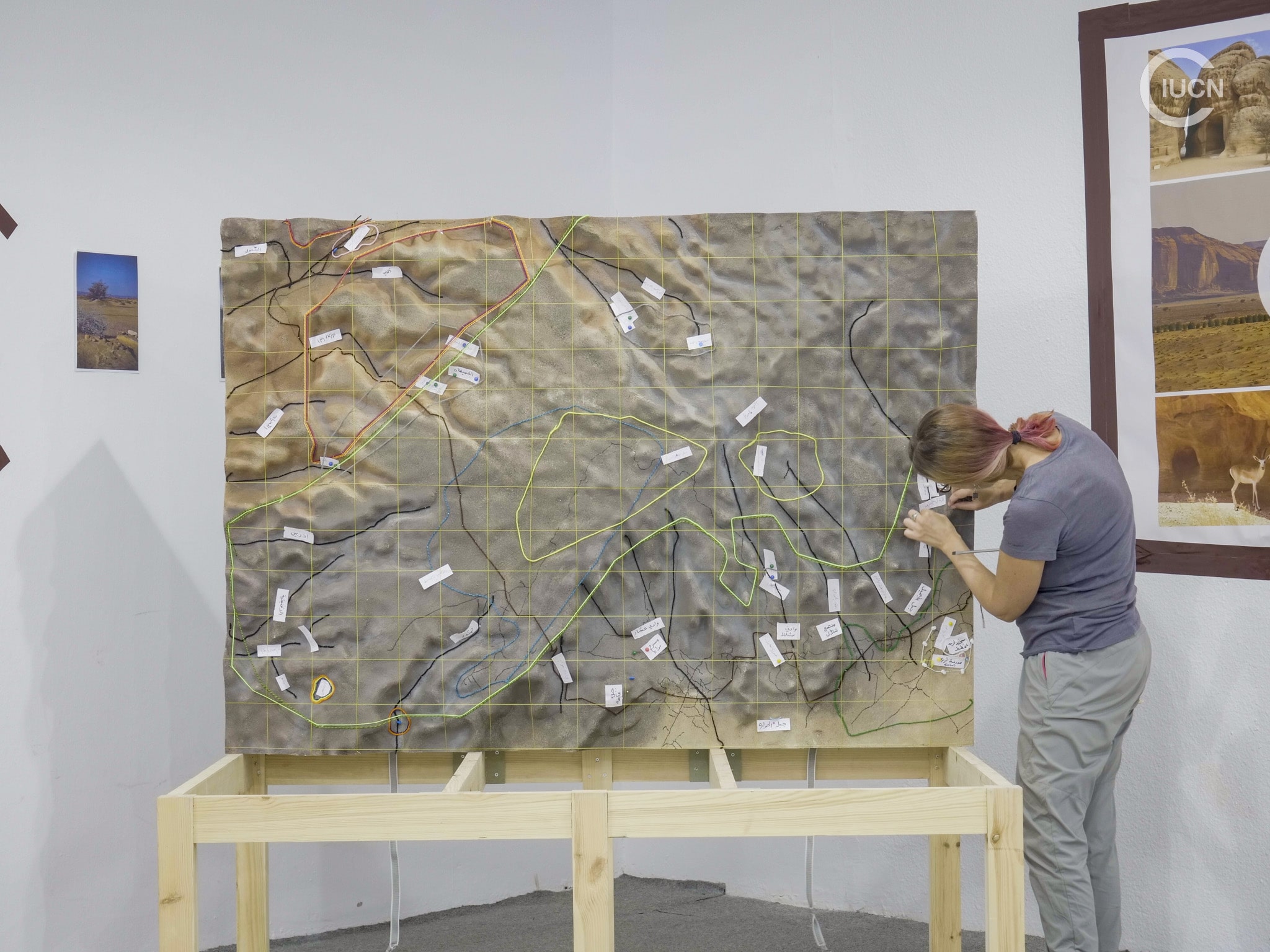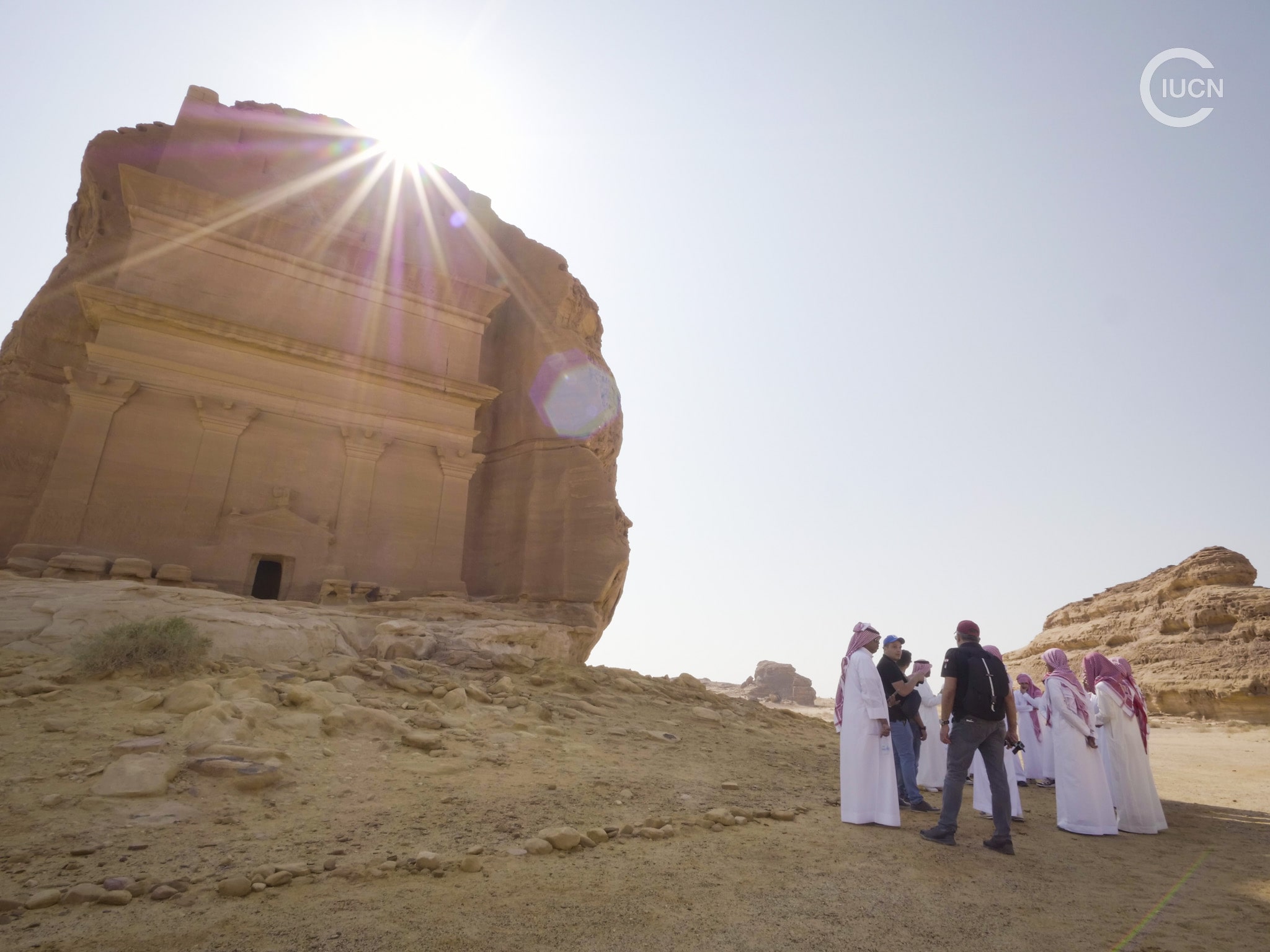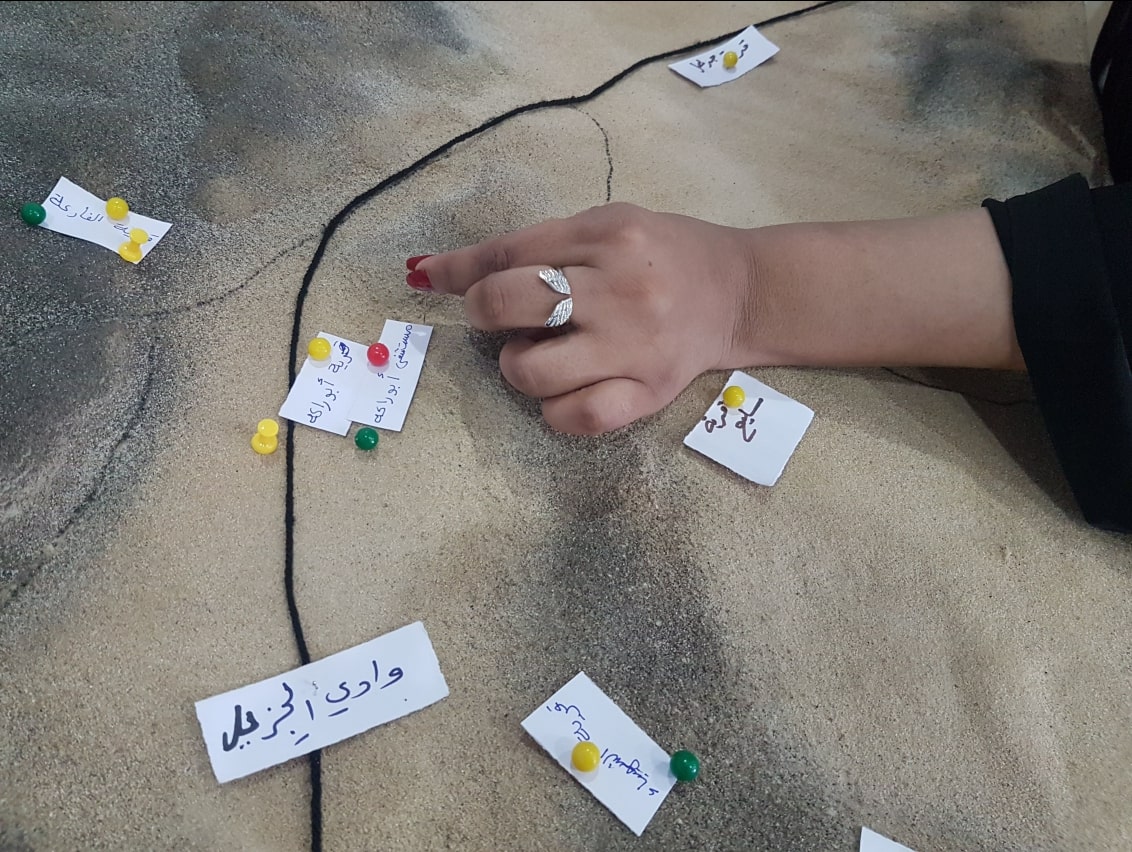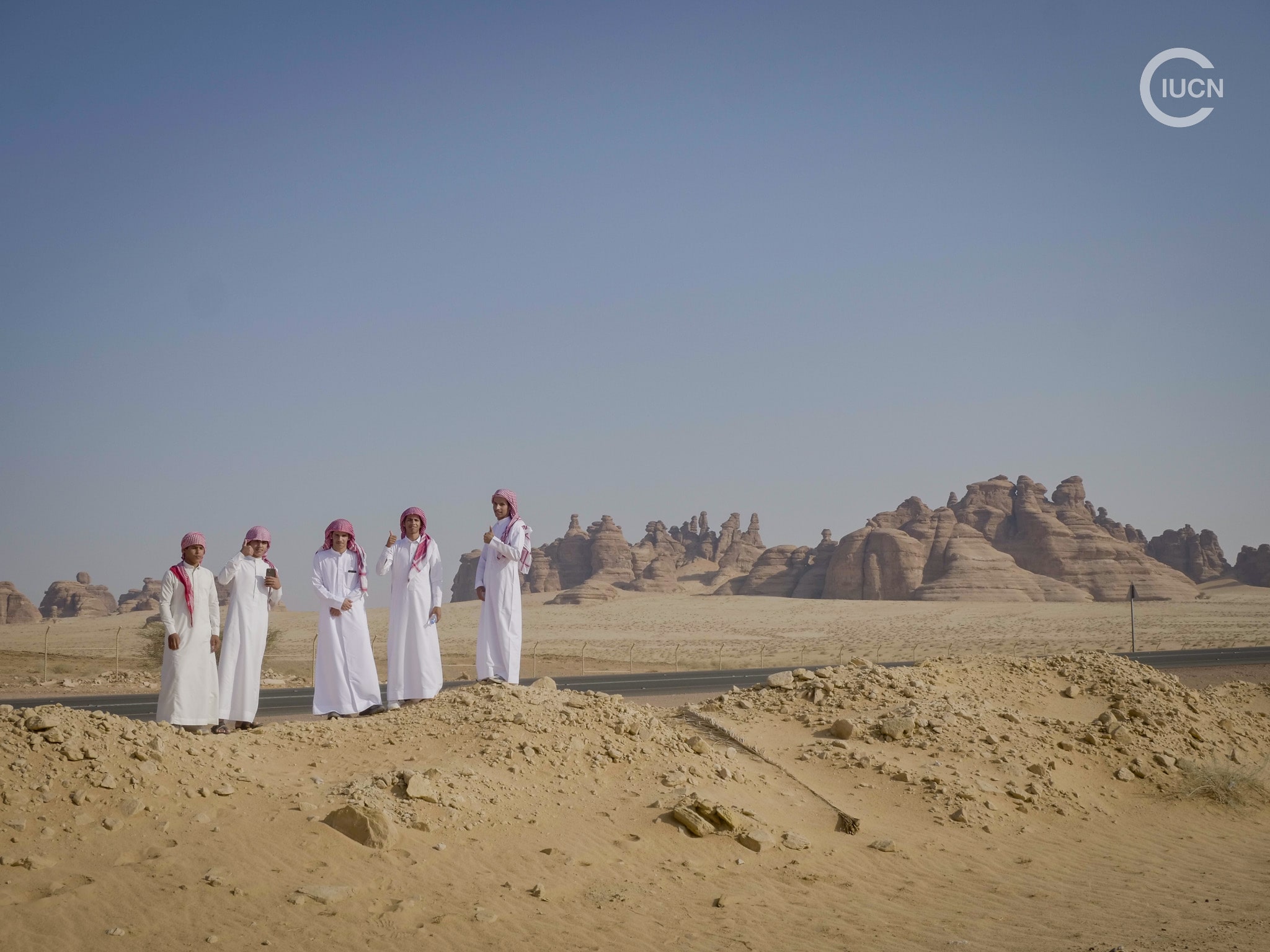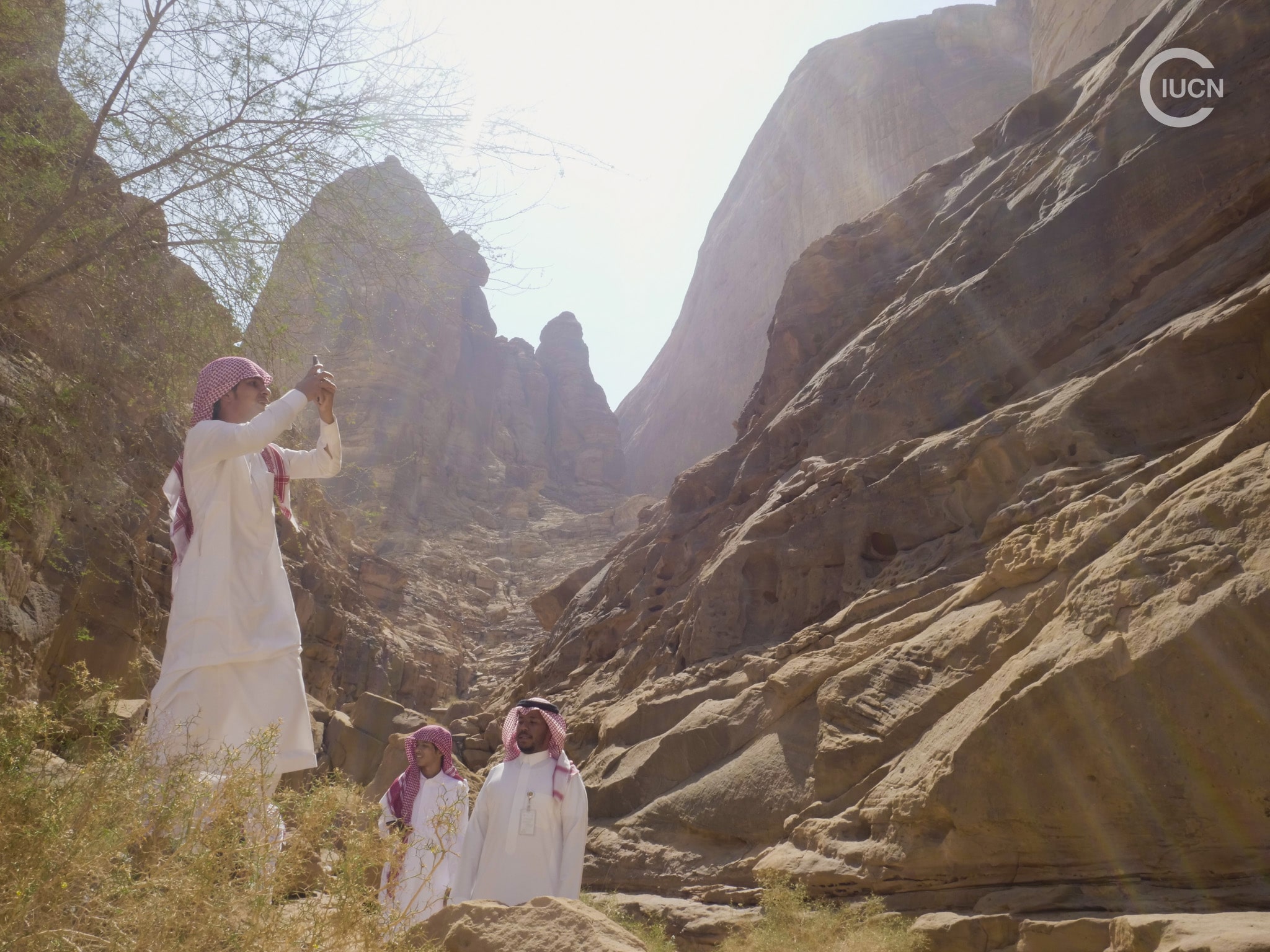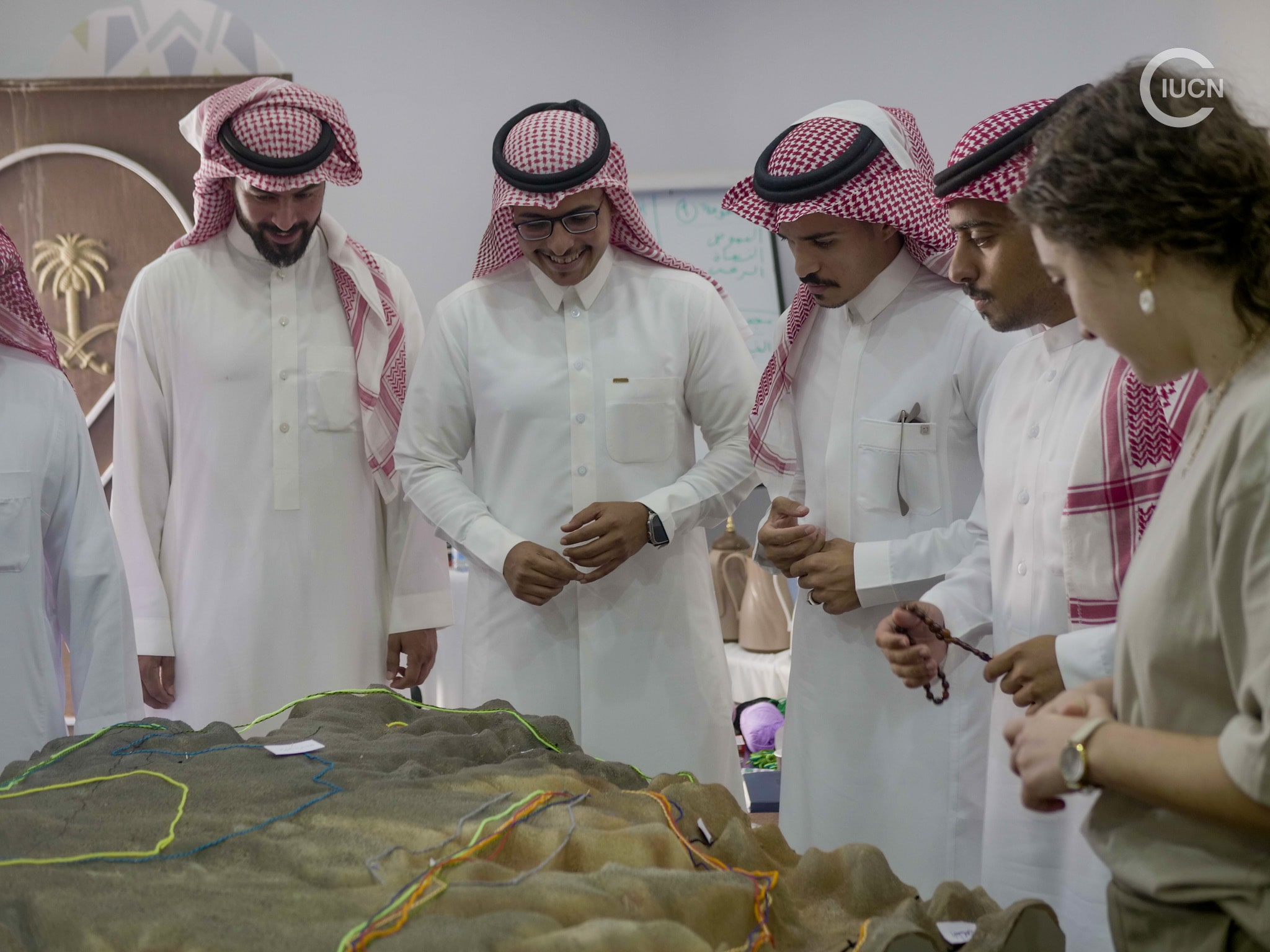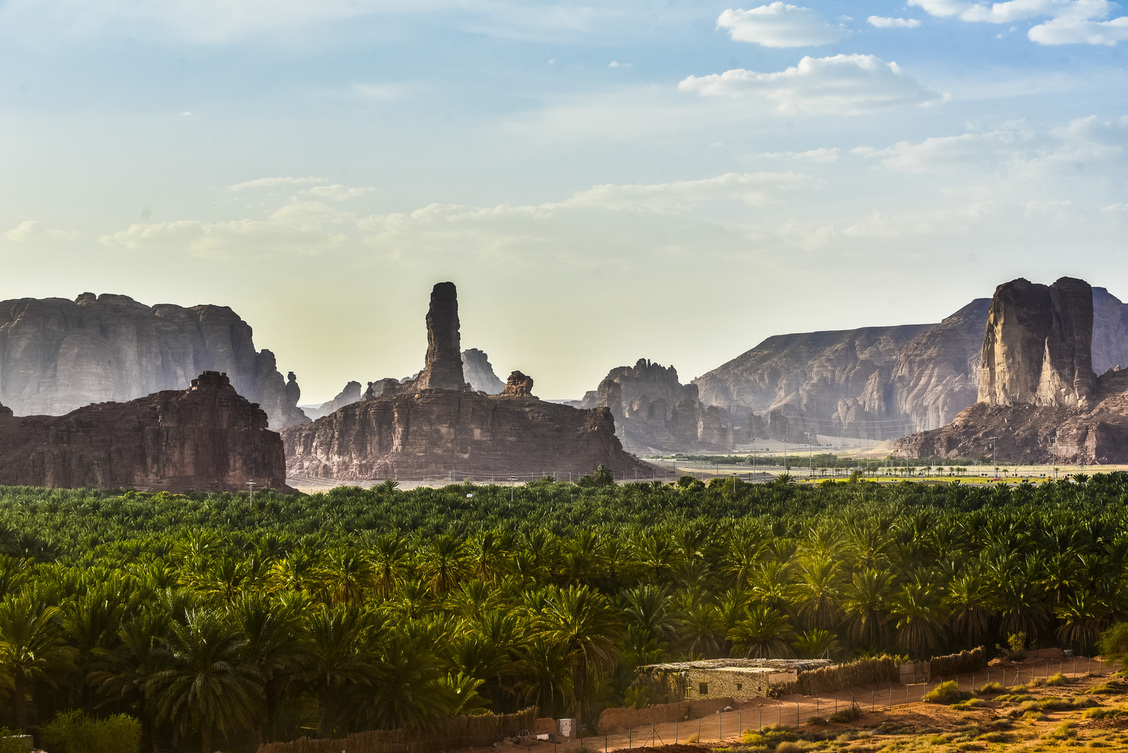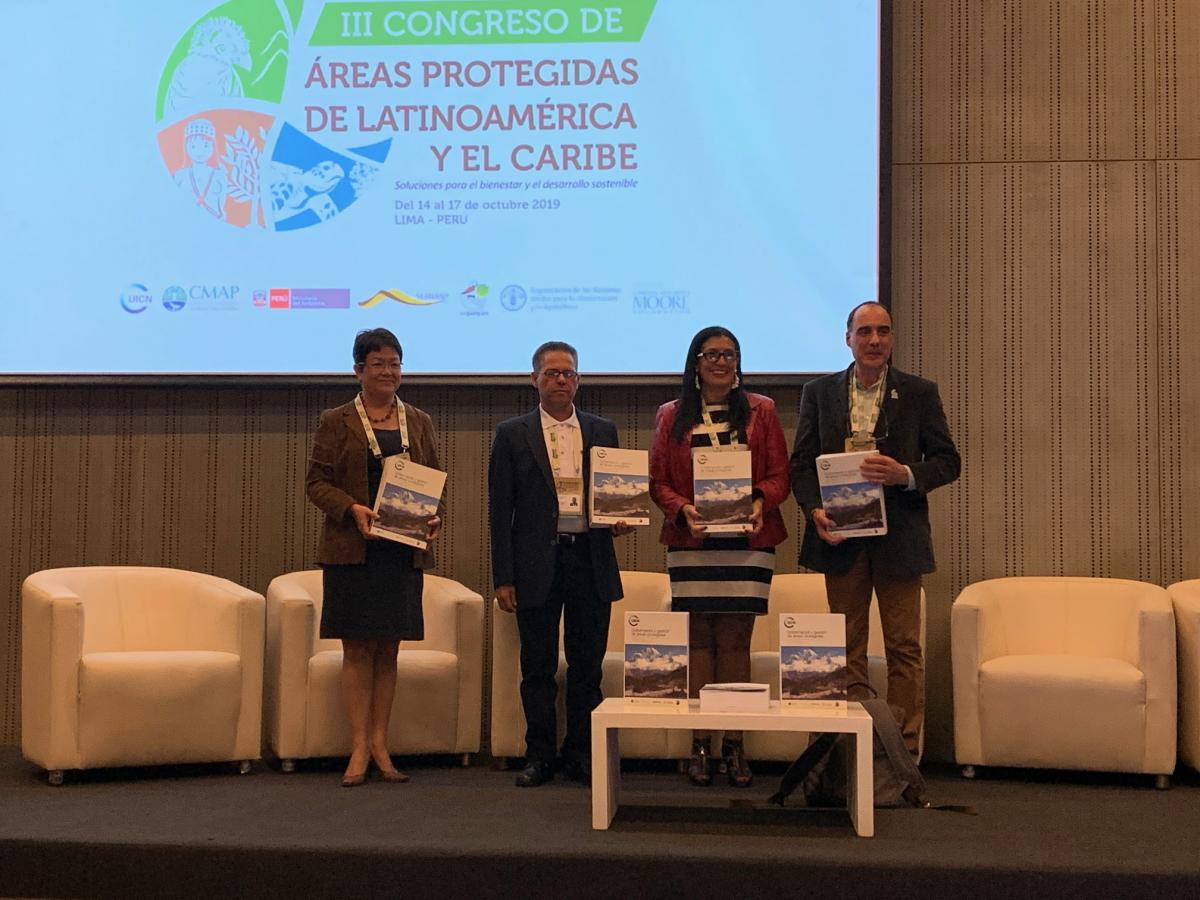In addition to the Participatory 3D Model, youth were involved in the initiative through a parallel Youth Media and Storytelling workshop. Fifteen boys and eighteen girls between the age of 16 to 18 were trained in techniques ranging from written storytelling, interview techniques, and cell phone photography over the course of four mornings, with a field visit to local heritage and natural sites on the final day to put these techniques into practice. The ultimate outcome was to assemble their work into a final exhibition on the workshop closing ceremony. The women resulting story posters focused on topics ranging from the collection of wild herbs and medicinal plants to the importance of sustainable wildlife management derived from local Islamic tradition.
Charlie Tokeley, Communications Officer for IUCN who coordinated the youth component, noted the need to incorporate youth into community engagement. “In ten years’ time, these same youth will be the principal users of these lands and resources. Storytelling exercises such as these enable them to engage with older generations, learn more about their own cultures and surrounding wild areas, and be passionate advocates for their sustainable use and preservation, whilst having fun in doing so.”
Through a blend of creativity and cultural exploration, the youth of Harrat Uwayrid, have demonstrated their invaluable role in safeguarding and narrating the rich tapestry of their land's traditional uses and stories. The successful implementation and outcomes of specialised workshops on storytelling and creative composition, underscore the essentiality of youth engagement in protected area management in alignment with IUCN's strategic vision to integrate local communities in conservation efforts. This participatory approach is an affirmation that, when equipped with the right tools and platforms, the younger generations become an integral force for conservation, cultural and natural preservation, and sustainable development.
“I have no words to describe how much I am thankful for you and how this workshop has changed my life. I will make sure to work with you in the future, and this is a promise. I now know what my mission in life is, and I will work hard to attain it”- Layan, one of the young female participants in the youth workshop.
The results of both the Participatory 3D Modelling and the Youth Media and Storytelling workshops were presented by the communities at the closing ceremony on October 26th to representatives from the Royal Commission of AlUla (RCU), local NGOs, and media. This initiative will inform the preparation of the management plans that IUCN and RCU are in the process of developing for each of AlUla’s six protected areas.
The Participatory 3D Modelling and Youth Media and Storytelling activities highlight the effective partnership between IUCN ROWA and the RCU under the AlUla Protected Areas Network Project for well-governed and effectively managed protected areas. This partnership contributes to both AlUla's development and Saudi Arabia's Vision 2030, emphasising community participation and knowledge integration in the management of protected areas.


